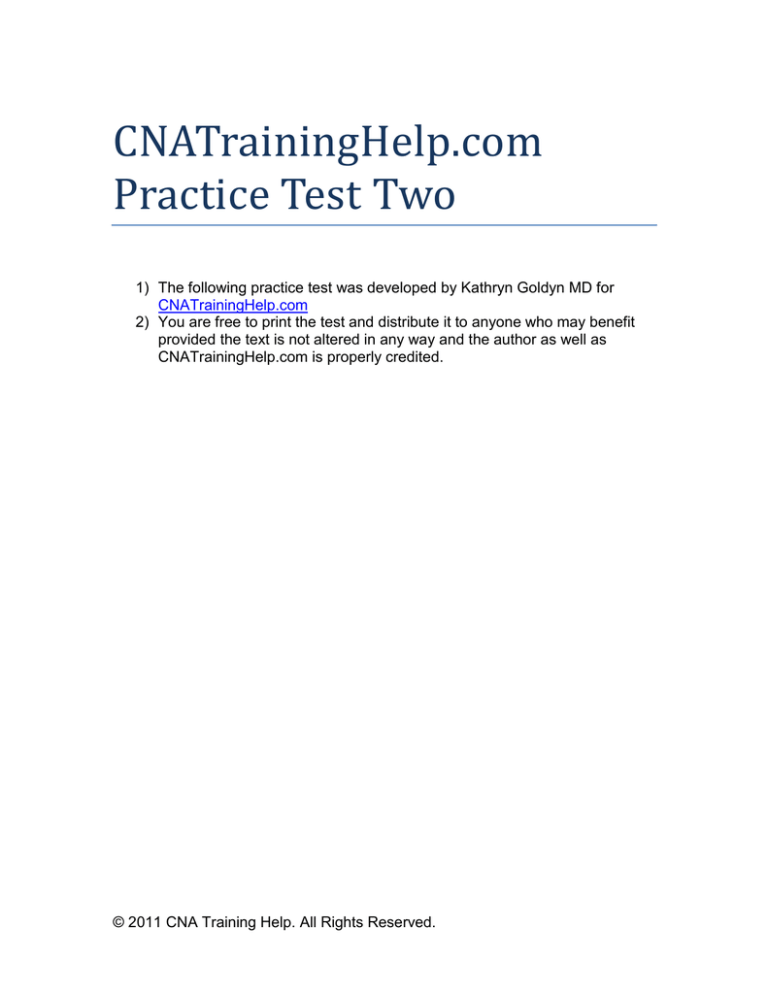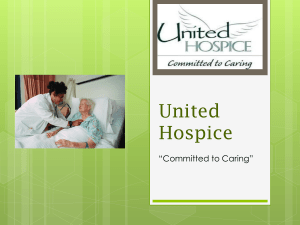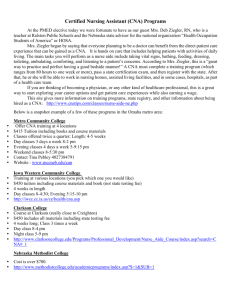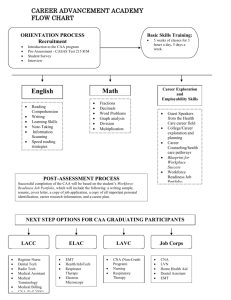
CNATrainingHelp.com
Practice Test Two
1) The following practice test was developed by Kathryn Goldyn MD for
CNATrainingHelp.com
2) You are free to print the test and distribute it to anyone who may benefit
provided the text is not altered in any way and the author as well as
CNATrainingHelp.com is properly credited.
© 2011 CNA Training Help. All Rights Reserved.
Practice Questions
1. Patients have the right to
a. refuse treatment.
b. speak to an ombudsman.
c. know what their treatments are.
d. all of the above.
2. You walk into a room and find that the patient has fallen onto the floor.
The first thing you do is
a. check the patient.
b. report what has happened to the R.N.
c. fill out an incident report.
d. notify the family.
3. When dressing a patient
a. allow the patient to help as much as possible.
b. do as much for the patient as you can.
c. get it done quickly as possible.
d. dress the weak side of a stroke patient before the strong side.
4. Which of the following is not a reason to give a bath?
a. to clean the patient.
b. to give range of motion exercises.
c. to check the skin.
d. none of the above.
5. The patient tells you that she needs you to spoonfeed her, even though
she uses her arms and hands normally. You should
a. spoonfeed her.
b. tell her that she needs to do as much as she can for herself.
c. put the tray in front of her and leave the room.
d. take away the tray.
6. SOAPE charting stands for
a. Subjective, Objective, Affective, Plan, Effective
b. Subjective, Objective, Assessment, Plan, Evaluation
c. Situation, Object, Affect, Prevention, Effective
d. Situation, Objection, Assertion, Prevention, Evaluation
7. The patient’s family tells you that they would like to bring their dog to visit.
You know that the facility has a strict policy against pets. You tell the
family that
a. dogs are not clean.
b. the dog could hurt someone.
c. this is not a dog kennel.
© 2011 CNA Training Help. All Rights Reserved.
d. you understand how they feel, but unfortunately dogs are not
allowed.
8. The patient tells you that someone spilled water onto her bed. You find
that a large spot of liquid has soaked the sheet around her hips. You
a. tell her that she has had an accident.
b. change the sheet in a non-judgmental manner.
c. tell her that no one would spill water onto her sheet.
d. scold her for soiling the sheet.
9. You throw away the patient’s urine, forgetting that it was supposed to be
measured. You
a. do not do anything.
b. estimate the amount of urine and record it.
c. tell the team leader.
d. give the patient some more water so that there will be more for you
to measure and record.
10. A sphygmomanometer measures
a.
b.
c.
d.
blood pressure
pulse rate
temperature
blood sugar
11. Emesis means
a.
b.
c.
d.
nausea
vomiting
pain
dehydration
12. A patient with a fatal disease who says that it is not really that bad is in
what stage of coping?
a. Acceptance
b. Bargaining
c. Anger
d. Denial
13. A patient is in respiratory isolation. Which of the following is required for
everyone entering his room?
a. Gowns
b. Masks
c. Gloves
d. None of the above.
© 2011 CNA Training Help. All Rights Reserved.
14. The patient’s daughter tells you that she wants to bring soup for her
mother for her mother, who is on a low sodium diet. You tell her
a. to be sure not to add salt to the soup.
b. that her mother is on a special diet, but her visits alone cheer her
up.
c. that there is no need because the kitchen provides plenty of food.
d. not to bring food from home because it is unsanitary.
15. To prevent a urinary tract infection in a patient with an indwelling catheter
you should
a. keep the catheter clean.
b. always keep the drainage bag below the level of the bladder.
c. never let the drainage bag or tubing touch the floor.
d. all the above.
16. No procedure is finished until you have
a. gone home.
b. cleaned up.
c. done the paperwork.
d. passed inspection.
17. A pulse oximeter measures
a. pulse rate.
b. oxygen in the blood.
c. respirator function.
d. ventilator function.
18. When using a Hoyer lift you should
a. lock the wheels before placing the sling under the patient.
b. project an attitude of confidence
c. explain what you are going to do first.
d. all of the above.
19. A new patient has been admitted to the floor and you must record what
jewelry of hers will be held for her. You describe her diamond ring as
a. diamond ring with gold setting.
b. glass ring with yellow setting.
c. clear stone ring with gold setting.
d. clear stone ring with yellow metal setting.
20. Call light buttons should always be
a. on the bed.
b. on the bedside table.
c. within reach.
d. on the handrails.
© 2011 CNA Training Help. All Rights Reserved.
21. At work you should always have a
a.
b.
c.
d.
watch with a second hand.
stethoscope.
pen.
all the above.
22. According to the Centers for Disease Control and Prevention, the number
one cause of death to residents in nursing homes is
a. infections.
b. cancer.
c. accidents.
d. heart disease.
23. A patient with an IV needs to ambulate. You
a. remove the IV.
b. place the IV bag onto a rolling stand.
c. hold up the IV and walk next to the patient.
d. check the IV for infiltration.
24. When leaving the room of a patient who is in isolation, what should you
do with your gown, glove, and mask?
a. Place them into the red bag provided.
b. Keep them on if coming right back.
c. Fold them up and store them in the patient’s room.
d. Any of the above, depending upon the situation.
25. A gait or ambulation belt can be used to help
a. a patient ambulate down the hall.
b. transfer a patient from bed to wheelchair.
c. restrain the patient.
d. a and b only.
26. To keep from giving patients infections you should
a. have a hepatitis B shot.
b. have a flu shot every year.
c. stay home when you have a cold.
d. all the above.
27. When taking a patient’s pulse you should
a. count for 30 seconds and multiply by 2.
b. count for 15 seconds and multiply by 4.
c. count for a full minute.
d. use the clock in the patient’s room.
28. You are on the night shift when you sustain a needle stick. You need to
© 2011 CNA Training Help. All Rights Reserved.
a. wash your hands and notify your supervisor on the night shift.
b. wash your hands and notify the director of nurses in the morning.
c. check the patient’s chart and do nothing if he does not have AIDS
or hepatitis
d. make an appointment with your private physician.
29. The purpose of rehabilitation is
a. to keep the patient comfortable.
b. to keep the patient alive.
c. to restore as much normal function as possible.
d. to prevent pressure sores.
30. The most accurate way to take a temperature is
a. rectally
b. orally
c. axillary
d. any of the above.
31. If a patient is incontinent of urine, to prevent accidents, the nursing
assistant should
a. remind the patient to be careful.
b. offer the bedpan frequently.
c. withhold fluids.
d. use diapers.
32. The orders on the patient’s chart say to ambulate bid. As a good nursing
assistant you take the patient
a. for a walk twice a day.
b. out in the wheelchair every day.
c. for a walk three times a day.
d. for a walk every day.
33. To get accurate daily weights, weigh the patient
a. before breakfast,
b. after dinner,
c. in the middle of the day.
d. at the same time each day.
34. To assist ambulation in a patient with one weak side you should walk on
the
a. weak side.
b. strong side.
c. side preferred by the patient.
d. right side.
© 2011 CNA Training Help. All Rights Reserved.
35. The last sense that a patient will lose in dying is
a. sight.
b. hearing.
c. tactile
d. smell
36. A patient who was speaking earlier develops slurred speech. You should
a.
b.
c.
d.
report it to the nurse immediately
ask the patient to speak more clearly.
ignore the slurred speech as it is a normal sign of aging.
report it at the end of shift.
37. A patient says that she is not religious. The nursing assistant, who is
highly devout, should
a. tell the patient she needs to know more about God.
b. ask the patient what will happen to her after she dies.
c. listen and respect the patient’s beliefs
d. call the chaplain.
38. After a urine specimen is collected it should be
a. labeled and refrigerated or taken to the lab promptly.
b. left in the patient’s room until the nursing assistant can get around
to taking care of it.
c. left on the desk at the nurses’ station until someone has time to
take it to the lab.
d. stored in the utility room.
39. The Heimlich maneuver is performed for
a. cardiac arrest.
b. choking.
c. bleeding.
d. tachycardia.
40. A patient in bradycardia has a
a. pulse rate of less than 60.
b. pulse rate of more than 90.
c. blood pressure of 140/90 or higher.
d. temperature of at least 99.6 F.
41. A patient recovering from a hip fracture has an order on her chart for leg
abduction. How should her legs be positioned in bed?
a. Crossed in the center of the bed.
b. Kept apart with a pillow.
c. However she is most comfortable.
© 2011 CNA Training Help. All Rights Reserved.
d. Elevated on a pillow.
42. CPR stands for
a. Carotid Pulse and Respirations
b. Carotid Pulse Resuscitation
c. Cardiopulmonary Resuscitation
d. None of the above.
43. In Fowler’s position the head is
a. elevated 45 to 90 degrees.
b. lowered to prevent shock.
c. level with the rest of the body.
d. turned to the side.
44. Which of the following takes the longest?
a. Setting wheel locks.
b. Checking the patient’s ID bracelet.
c. Getting help for lifting a heavy patient.
d. Filling out an incident report.
45. With regard to hand washing
a. have the water as hot as you can stand to kill the microbes.
b. wash for at least 30 seconds.
c. it is not necessary if you wear gloves for a procedure.
d. bar soap is just as good as liquid.
46. One cup, or 8 fluid ounces, is equal to
a. 240 milliliters
b. 100 milliliters
c. 1 liter
d. 79.5 milliliters
47. Passive range of motion is used to prevent
a. pressure sores.
b. infections.
c. weakness.
d. contractures.
48. When picking a light object off the floor you should
a. bend your knees and lean over.
b. keep your back straight and bend your knees.
c. bend over to pick it up because it is light..
d. lean to the side.
49. When providing perineal care you should always
a. wash your hands first.
© 2011 CNA Training Help. All Rights Reserved.
b. wear gloves.
c. wipe from anterior to posterior on a female.
d. all the above.
50. Learning for certified nurses assistants ends
a. with graduation.
b. when you pass your licensing exam.
c. when you are hired.
d. never.
Answers: 1.d. 2.a. 3.a. 4.d. 5.c. 6.b. 7.d. 8.b. 9.c. 10.a. 11.b. 12.d.
13.b. 14.b. 15.d. 16.c. 17.b. 18.d. 19.d. 20.c. 21.d. 22.a.
23.b. 24.a. 25.d. 26.d. 27.c. 28.a. 29.c. 30.a. 31.b. 32.a.
33.d. 34.a. 35.b. 36.a. 37.c. 38.a. 39.b. 40.a. 41.b. 42.c.
43.a. 44.d. 45.b. 46.a. 47.d. 48.b. 49.d. 50.d.
© 2011 CNA Training Help. All Rights Reserved.
© 2011 CNA Training Help. All Rights Reserved.



